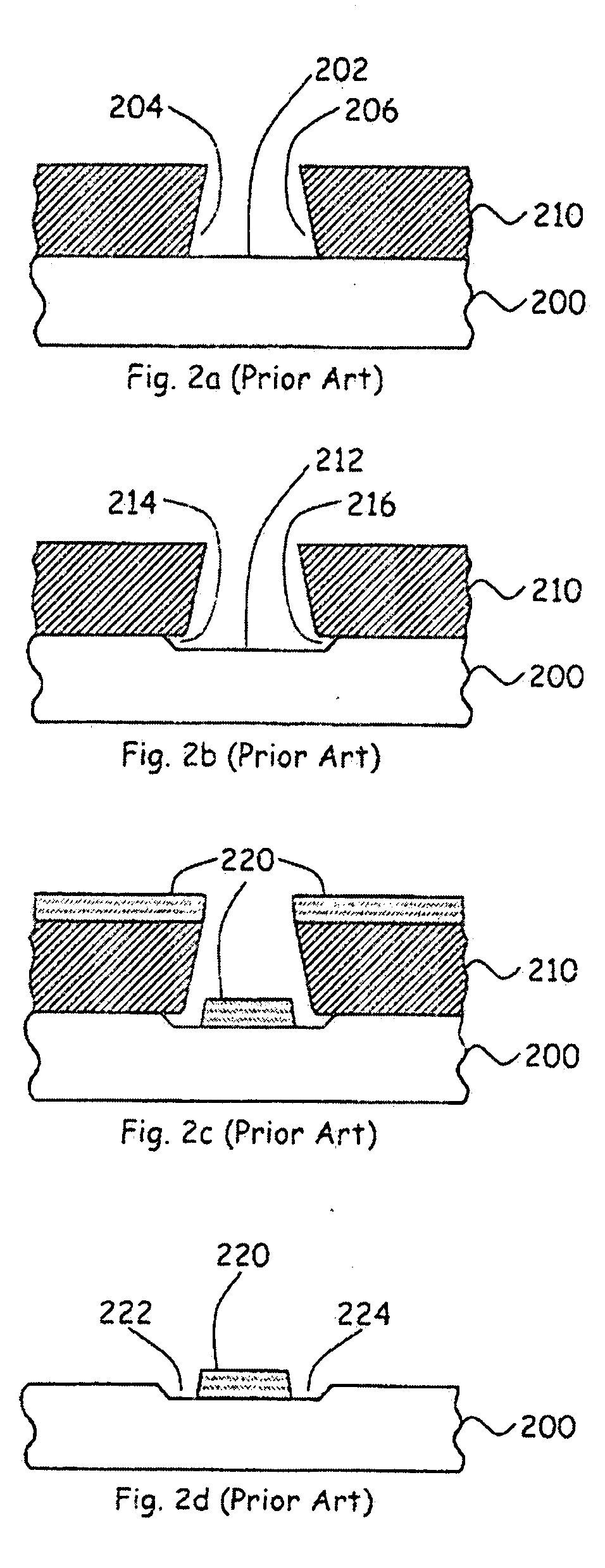Methods of Minimizing Etch Undercut and Providing Clean Metal Liftoff
a technology of etching substrate and clean metal, which is applied in the field of etching substrate methods, can solve the problems of difficult dimension control, limited total thickness of metal that can be deposited on the etched surface, and difficult and straightforward selection of all metal layers in the “etch-back” approach, etc., and achieves short etch time, high etch selectivity, and adequate step coverage
- Summary
- Abstract
- Description
- Claims
- Application Information
AI Technical Summary
Benefits of technology
Problems solved by technology
Method used
Image
Examples
first embodiment
[0046]Subsequent creation of the resist overhang structure for facilitating clean metal liftoff follows a procedure similar to that described above in the present invention. After the etching of the exposed portion 732 of the substrate 700, the entire wafer with the bilayer resist pattern is then blanket exposed without a mask with deep UV irradiation. This exposes the sidewalls of the bottom resist opening to the deep UV light. The sidewalls of the bottom resist opening are next developed in a second developer, which does not dissolve the exposed top layer photoresist 730. If the bottom resist 720 is PMMA and is etched earlier by the means of oxygen RIE, it may not be necessary to use the blanket exposure with deep UV irradiation to expose the sidewalls of the PMMA because the light emission from the oxygen plasma contains light of wavelengths that can expose the PMMA. One such second developer that develops exposed PMMA but not the top photoresist is toluene. The exposure of the s...
second embodiment
[0053]Following creation of an overhang resist edge profile in the bilayer resist structure, a metal evaporation or sputter deposition step is next performed to deposit the desired metal 870 on the wafer as illustrated in FIG. 8l. The total deposited metal thickness is to be larger than the combined etch depth of the underlying substrate and the thickness of the dielectric layer 810, but is to be smaller than the thickness of the bottom resist layer 820 for clean metal liftoff. Because the top photoresist opening is larger than the dielectric opening after going through the earlier pattern widening step of the resist opening and because the bottom resist has undercuts 864 and 866, metal is also deposited on top of the exposed portions of the dielectric layer around the dielectric opening. When the total thickness of the deposited metal 870 is larger than the combined etch depth of the substrate material and the thickness of the dielectric layer 810, the deposited metal 870 on the et...
PUM
| Property | Measurement | Unit |
|---|---|---|
| wavelength | aaaaa | aaaaa |
| thickness | aaaaa | aaaaa |
| wavelength | aaaaa | aaaaa |
Abstract
Description
Claims
Application Information
 Login to View More
Login to View More - R&D
- Intellectual Property
- Life Sciences
- Materials
- Tech Scout
- Unparalleled Data Quality
- Higher Quality Content
- 60% Fewer Hallucinations
Browse by: Latest US Patents, China's latest patents, Technical Efficacy Thesaurus, Application Domain, Technology Topic, Popular Technical Reports.
© 2025 PatSnap. All rights reserved.Legal|Privacy policy|Modern Slavery Act Transparency Statement|Sitemap|About US| Contact US: help@patsnap.com



